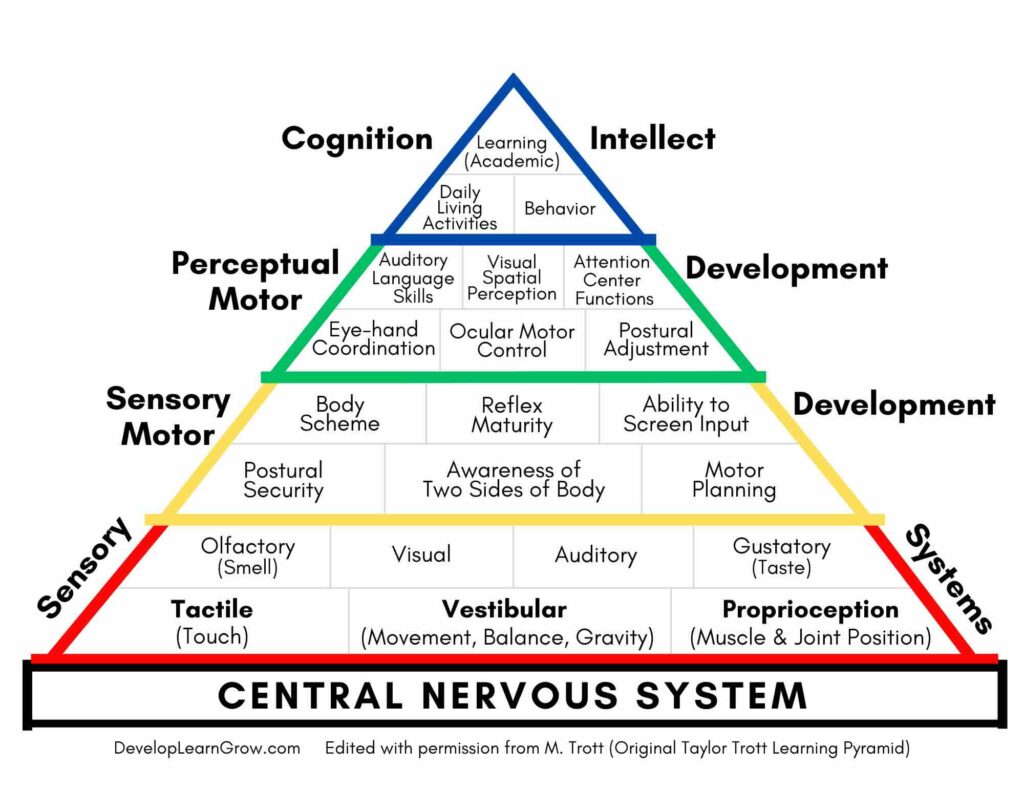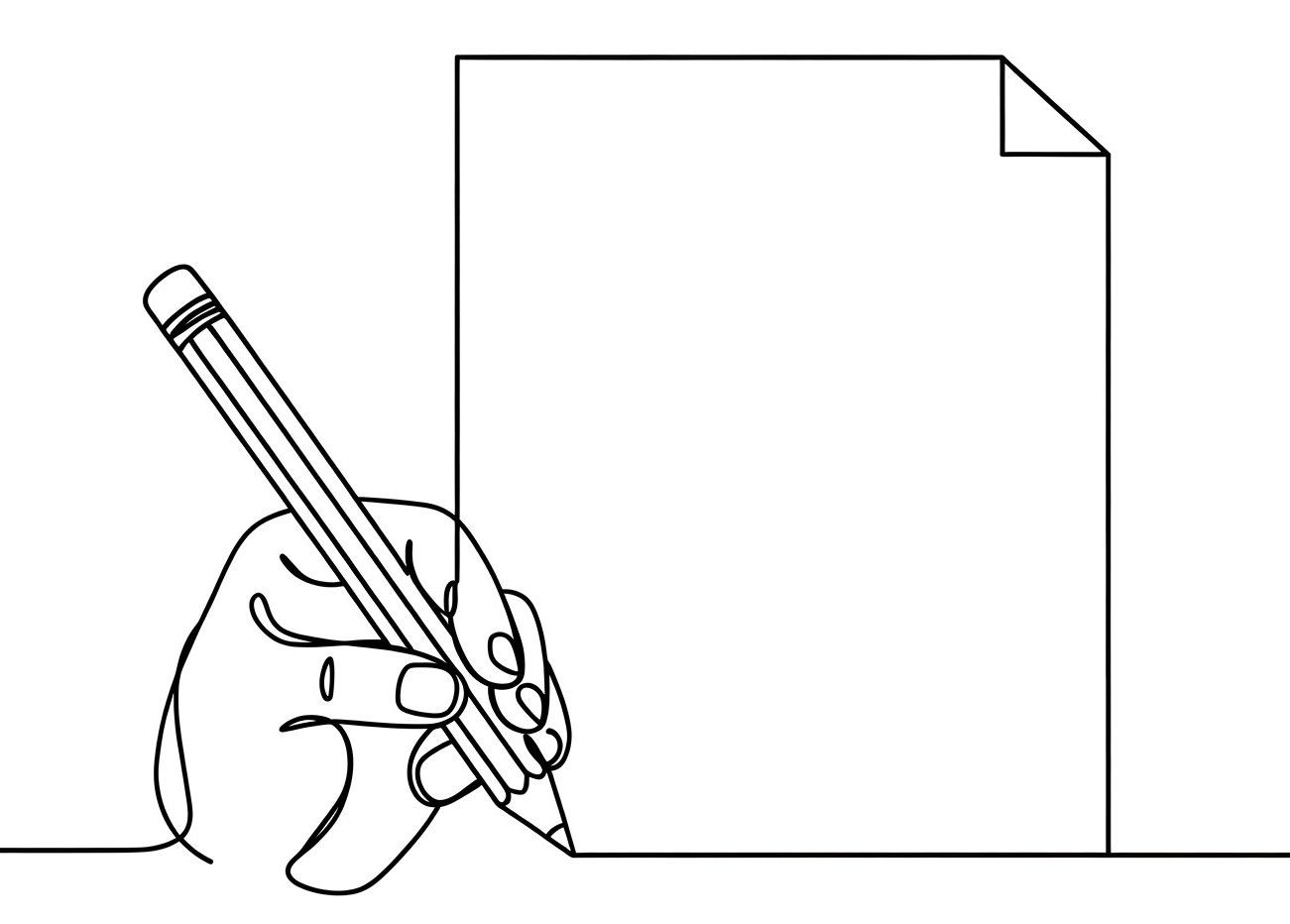
Introduction
The Pyramid of Learning, developed by occupational therapist Kathleen Taylor and special educator Maryann Trott in 1991, offers a visual framework illustrating the foundational skills necessary for a child’s development and learning. Rooted in the principles of sensory integration theory by Jean Ayres, this pyramid emphasizes the critical role of sensory processing as the base upon which higher-level skills are built.
Structure of the Pyramid
The pyramid is organized into hierarchical levels, each representing a category of skills that build upon the foundation below:
- Central Nervous System (Base Level):
- This foundational level represents the body’s ability to receive, process, and respond to sensory information from the environment.
- Sensory Systems:
- Includes seven primary sensory modalities:
- Tactile: Sense of touch.
- Vestibular: Sense of balance and spatial orientation.
- Proprioception: Sense of body position and movement.
- Olfactory: Sense of smell.
- Visual: Sense of sight.
- Auditory: Sense of hearing.
- Gustatory: Sense of taste.
- Includes seven primary sensory modalities:
- Sensory Motor Development:
- Skills emerging from effective sensory processing, including:
- Postural Security: Confidence in maintaining body position.
- Awareness of Two Sides of the Body: Understanding and coordinating both sides.
- Motor Planning: Ability to conceive, plan, and execute new movements.
- Body Scheme: Internal awareness of body parts and their relationships.
- Reflex Maturity: Integration of primitive reflexes.
- Ability to Screen Input: Filtering relevant sensory information.
- Skills emerging from effective sensory processing, including:
- Perceptual Motor Development:
- Higher-level skills that integrate sensory input with motor output, such as:
- Eye-Hand Coordination: Coordinating visual input with hand movements.
- Ocular Motor Control: Efficient control of eye movements.
- Postural Adjustment: Adapting posture in response to movement.
- Auditory Language Skills: Processing and interpreting auditory information.
- Visual-Spatial Perception: Understanding spatial relationships visually.
- Attention Center Functions: Maintaining focus and attention.
- Higher-level skills that integrate sensory input with motor output, such as:
- Cognition and Intellect (Apex Level):
- Encompasses complex skills such as:
- Daily Living Activities: Performing routine tasks independently.
- Behavior: Appropriate social and emotional responses.
- Academic Learning: Engagement and success in educational activities.
- Encompasses complex skills such as:
Significance in Child Development
The Pyramid of Learning underscores the importance of foundational sensory processing in achieving higher-level developmental skills. For instance, challenges in sensory integration can impact a child’s ability to perform daily tasks, regulate behavior, and succeed academically. By identifying and addressing issues at the foundational levels, caregivers and professionals can support the development of more complex skills.
